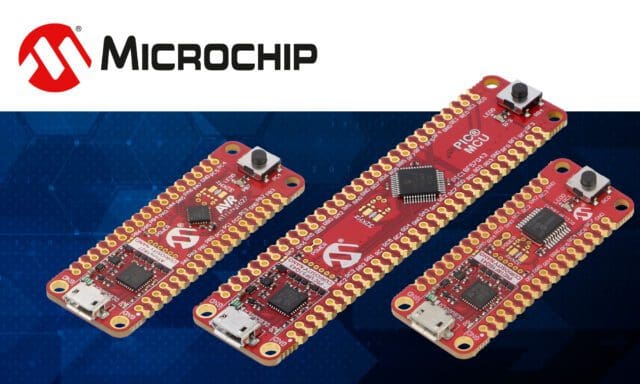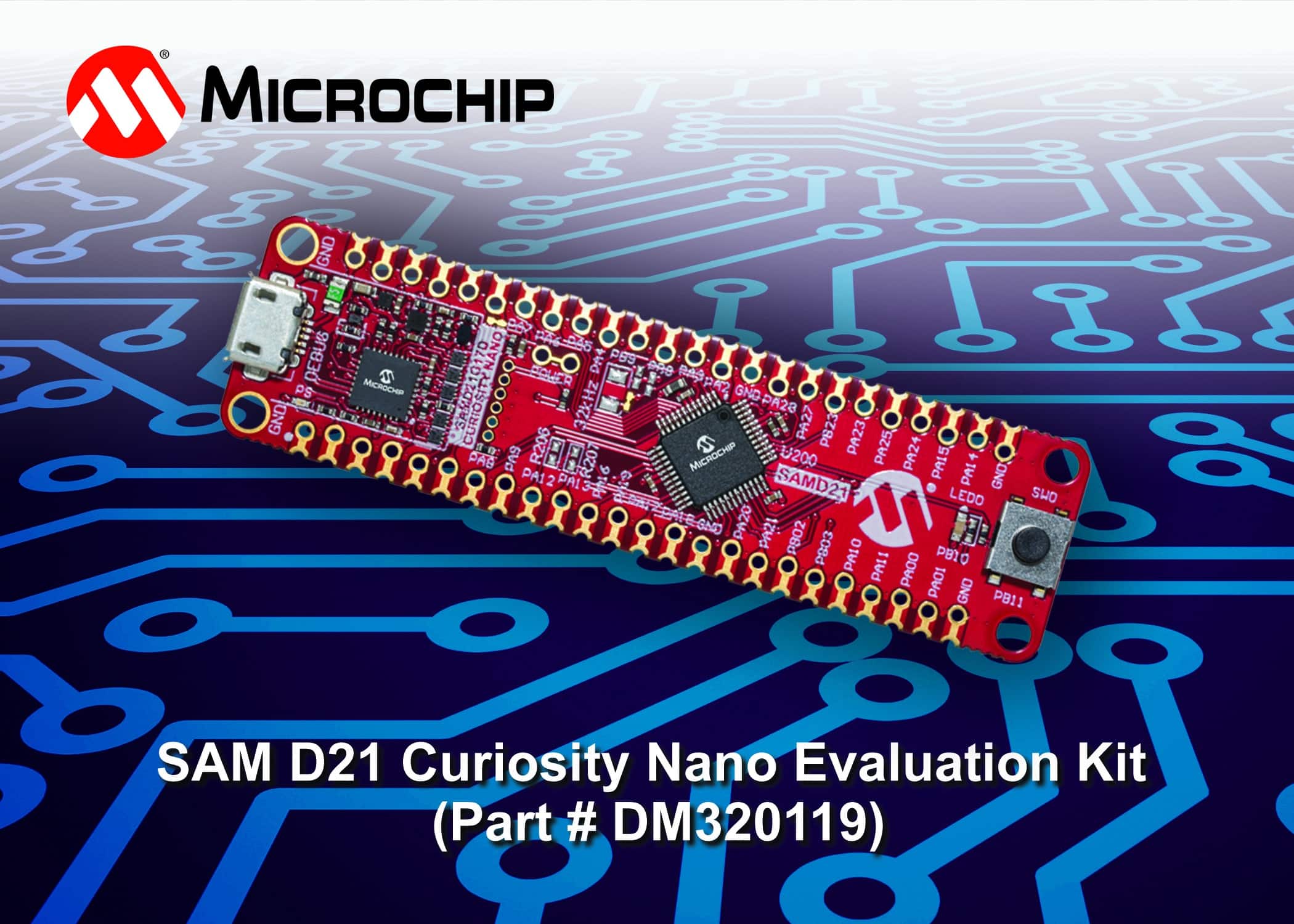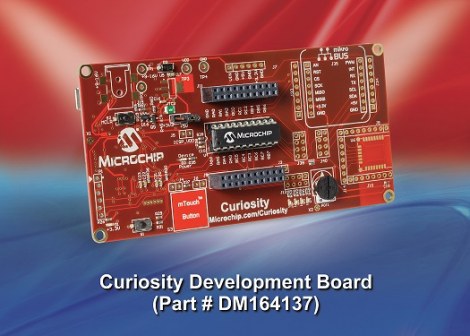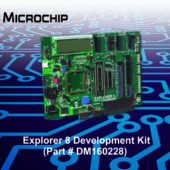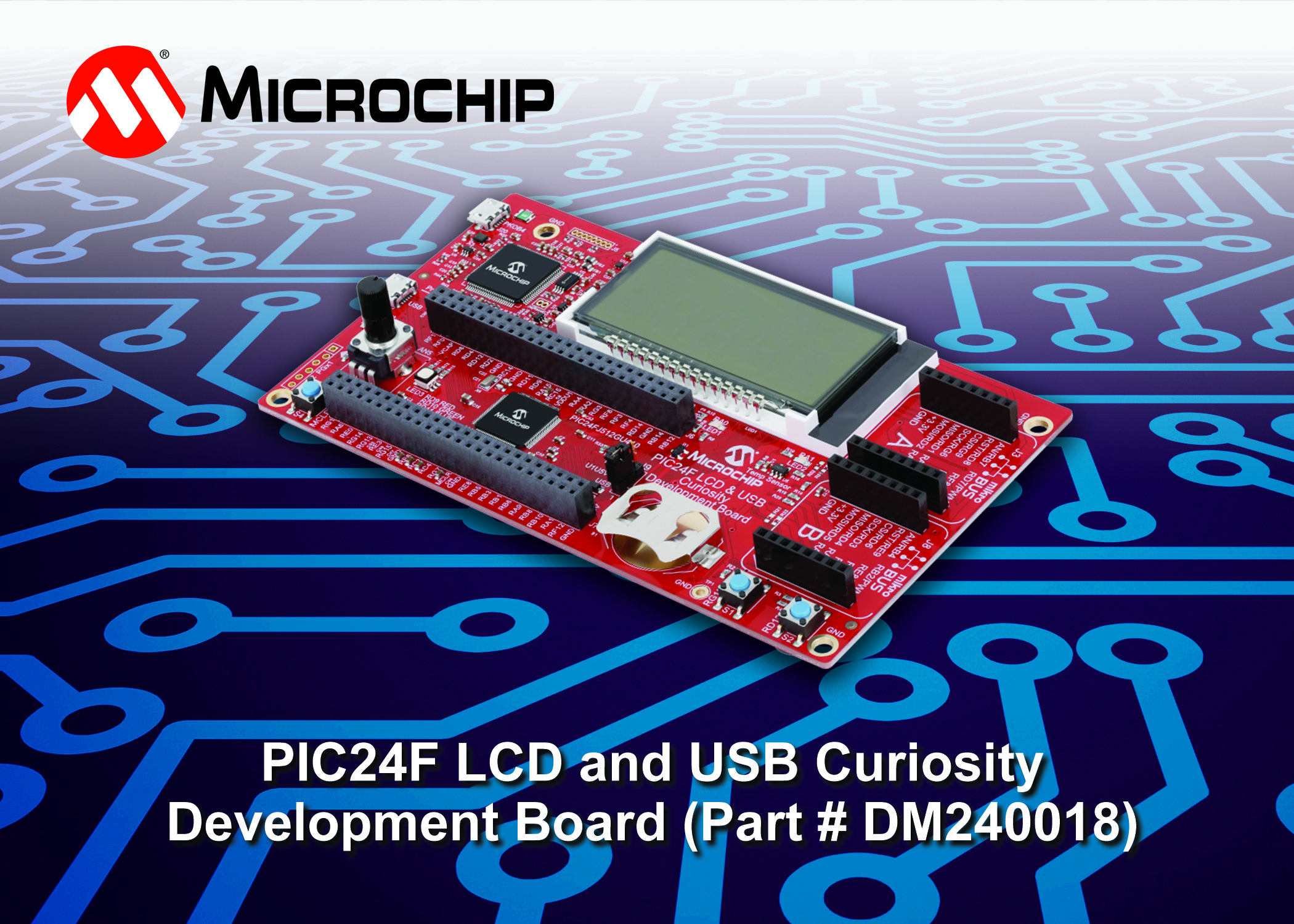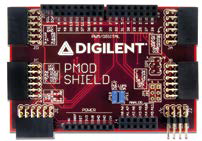MC Nano series and compatible Microelectronic modules.
In recent years, embedded platforms equipped with microcontrollers (the best-known brand here is probably Arduino) have been gaining popularity. With universal availability and widespread support from manufacturers and the user community, they are versatile and easy-to-learn development tools. However, in professional conditions, for example, in the process of prototyping mobile devices, the disadvantage of these products is the limited number of supported systems. Therefore, during laboratory work, at the design stage, the development platforms prepared by the system producers themselves they are still the safest solution. It should be noted here that they did not miss the advantages of popular solutions from the consumer segment: their ease of adaptation and affordability. Today in the market there Easy-to-use development boards prepared by major microcontroller manufacturers, primarily the company Microchip,whose portfolio includes systems from the PIC® and AVR® families. Below we present one of the prototype solutions of this manufacturer, of the Curiosity Nano series.
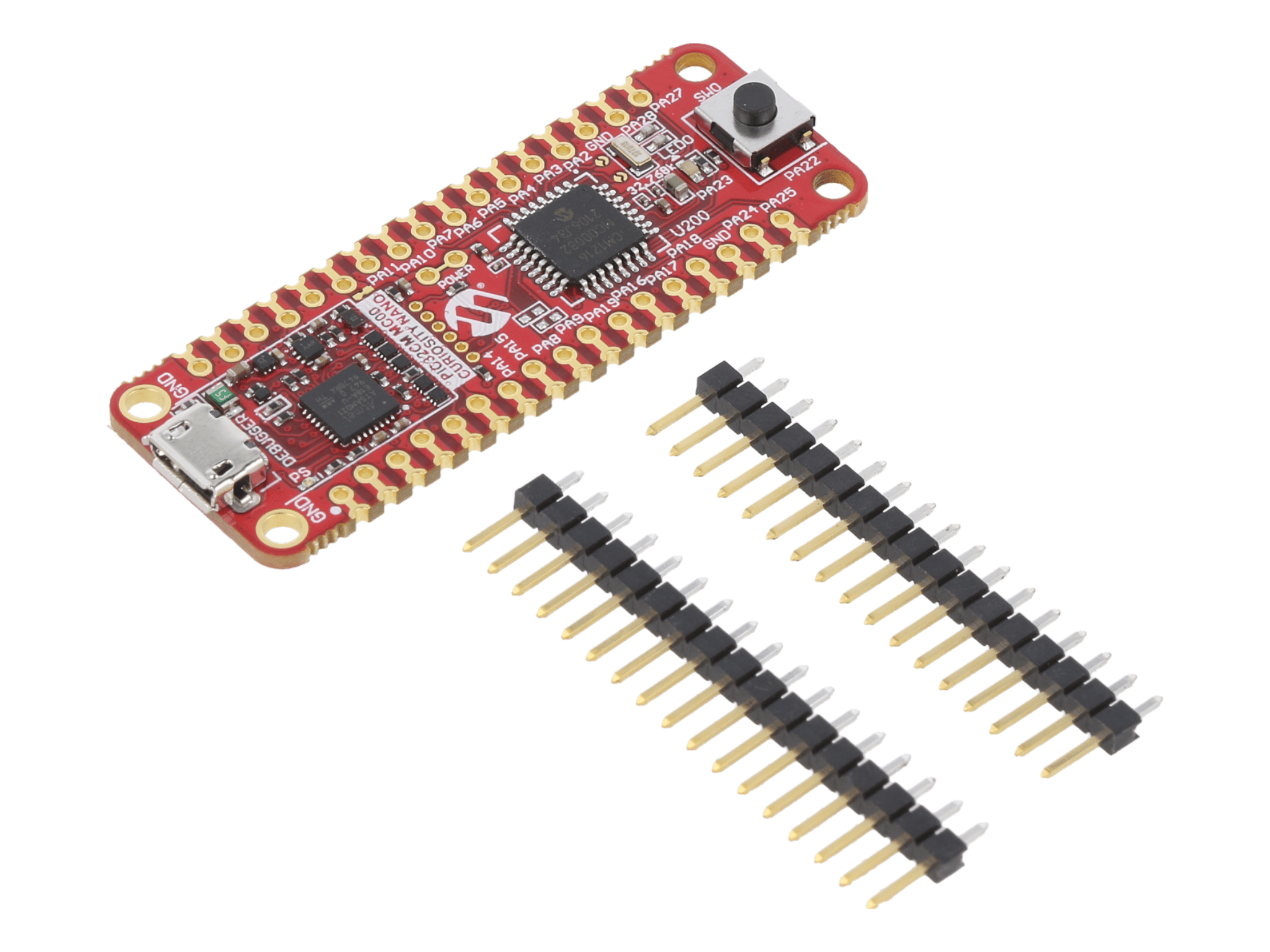
Curiosity Nano series products
Microchip Curiosity Nano (or MC Nano) is a commissioning platform primarily dedicated to PIC® and AVR® microcontrollers 8-bit. With its help, you can also develop applications equipped with some 32-bit products from the PIC32 and SAM families with ARM® Cortex® architecture. TME's offer includes 15 development boards within this platform and 2 motherboards. Regardless of the system used, the Curiosity Nano platform has been engineered to maximize the design speed of new applications and, as a result, shorten the time between the prototyping stage and deployment into mass production. The following video shows an example of the use of MC Nano solutions in the process of dynamic project development.
Example of MC Nano board using a 32\bit PIC32CM series chip.
Key features of the MC Nano platform
The development boards included in the platform come in many sizes (lengths), depending on the size of the microcontroller used on them. The smaller boards are dedicated to circuitry with 20 pins (including 16 GPIO pins), while the larger ones house MCUs in a 48-pin housing, which translates to 40 I/O pins. Regardless of the length, the products included in the platform share the key physical characteristics (including the width of the board, the pitch of the pins, the presence of a MicroUSB connector for power, communication and programming) and technical characteristics, allowing a seamless migration between individual models. In addition, the manufacturer announces that the platform will be developed alongside the microcontroller offering. You can expect the recently introduced Microchip chips to appear in the Curiosity Nano family, giving designers the comfort of working with the latest solutions in a proven and familiar environment.
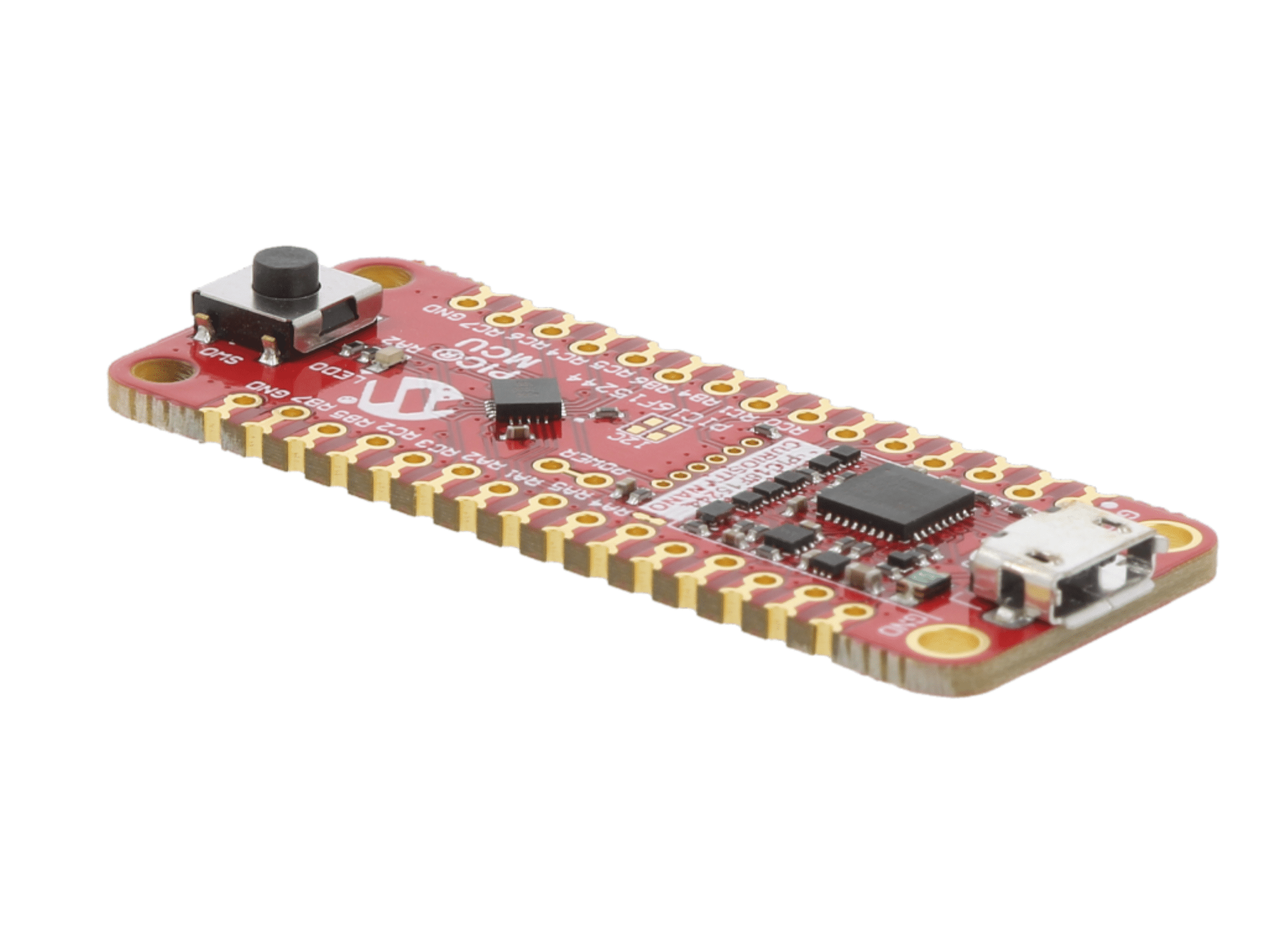
Package content
Properly designed holes eliminate the need to solder connectors.
Two pin connectors are included with the MC Nano. At first glance, you can see the interesting design solution used by Microchip. The GPIO fields, arranged on the PCB in one step of 2,54 mm, they contain both edge connectors and holes. In both cases, they are metallized cable glands, adapted to the assembly of pin connectors. Due to the small transverse displacement of the holes relative to each other, a perfect fit of the pin connectors and optimal connection parameters are guaranteed, and the need to solder them is virtually eliminated (although it is recommended). After installation, the PCB can be mounted to a larger breakout board, dedicated motherboard, or adapter (available and compatible products are described later in this article).
Systems on the PCB circuit
The Microchip Curiosity Nano platform features a series of general characteristics shared by all the models of the series. In the central part of the board there is a microcontroller (C), whose pins are connected to the fields at the edges of the PCB (F), and a quartz resonator (D). For simple prototyping, a button (A) and an LED (B) on the plate. Unlike the Arduino platform, the switch does not have a reset function, it is connected to the I/O pin of the microcontroller (the address of the dedicated output is marked on the PCB, it differs between serial models). The Micro USB socket (G) is used for system power and communication.

Data transmission between MC Nano and a computer (system, IDE software, communication terminal, etc.) is done through a virtual COM port. Most of these drives, when connected to a PC, will be recognized by the operating system as an external drive labeled "CURIOSITY." Just copy to this device .hex file – and the programming of the microcontroller will be done automatically. This functionality is possible because the MC Nano boards have a built-in nEDBG chip, i.e. a debugger/programmer (E). Their presence makes it possible to operate the products in question without the use of additional devices. In addition, thanks to it, the microcontroller is not loaded with bootloader support, which speeds up the execution of the target program and frees up memory.
In addition, the MC Nano circuits use a programmable voltage regulator Allows you to define the operating voltage and power range of the microcontroller in the range of 1.8V to 5V DC.
Output standardization
One of the advantages of the Microchip platform is the standardization of the pins. Regardless of the selected board model and the microcontroller installed on it, the fields at the edges of the PCB are connected to the programmer, debugger and core pins. system with the same functionality. So: the order of the connectors on the board does not match the numbering of the microcontroller pins; however, it is the same for all the MC Nano series. This standard applies to the first 28 pins (USB connector side).
The cables are divided into several sections. The first is defined as DEBUG (system connection pool). These pins are used to communicate with the nEDBG circuit. There are also power inputs (VBUS, VTG adjustable), GND ground, and the VOFF pin that controls the operation of the built-in voltage regulator. You can even turn it off if you need to. The user also has the following serial communication lines (Virtual COM Port): CDC RX/TX. The following 4 pins DBG1-DBG4 belong to the debugger interface. The interface supported by a given board model depends on the type of microcontroller. For PIC, it will be ICSP™ and MCLR interface, for AVR UPDI interface, while for ARM® – SWD interface.
The rest of the outputs are the communication (COM) and analog (ANALOG) sections. They are also a common feature of the MC Nano series. The COM section groups the pins used for communication Via: UART, I bus2C and SPI. On the opposite edge of the PCB there is analog inputs, that is, the outputs of the analog-to-digital converters built into the microcontroller. In most cases, they can also be used as outputs for counters (timers) and PWM signal generators. Of course, these outputs cannot be programmed on any microcontroller pin (as is the case with digital inputs/outputs). The standardization of its position on the plate translates into ease of use and migration between individual models of development boards. If the microcontroller installed on the board has more ADC inputs or PWM outputs, they are available in the following section: GPIO. Here the mapping is more arbitrary since the number and capacities of the I/O ports are strictly dependent on the functionality of the host system. Consult the documentation for exact information on which physical pin has been assigned to which connector. It is available after connecting the NC Nano board to the computer's USB port. The mass storage device (which will be detected by the system and presented as a drive labeled "CURIOSITY") contains the file KIT-INFO.HTM – and in it detailed information about the function of each pin on the given model of board.
MC Nano devices include mass memory with preloaded digital documentation.

Integrated debugger functionality
Integrated on the board, the Microchip Curiosity Nano debugger (known as PKOB nano, nEDBG ornanodebugger) has the basic function, that is: control the course of program execution (flow control – start, stop, step activation, restart); reading and writing of non-volatile memory content of the microcontroller; trap management (breakpoints) into a number depending on the type of system.

digital preloaded.
The firmware of the embedded debbuger can be updated via the MPLAB® IDE development environment or Microchip Studio. PKOB nano is a bit slower than similar solutions, such as the PICkit™4 programmer. It also has some limitations, such as the inability to write certain areas of the microcontroller's flash memory. Secondly: protects against accidental overwriting of memory areas responsible for the debugging process itself or unwanted change of the value of fuse bits in the case of AVR® microcontrollers. On the side of the advantages there is also the fact that, thanks to the presence of PKOB nano, the disk is automatically recognized in the MPLAB IDE and Microchip Studio development environments. After connecting the board, the user gets immediate access to sample programs, documentation, electrical diagram, terminal diagram, microcontroller catalog card, etc. At the end of this article, you will find videos of examples and basics of programming microcontrollers. Curiosity Nano.

pins for Click modules.
Compatible motherboards and modules
TME's offer also includes a series of accessories and complementary products that will facilitate the first steps with the MC Nano platform, as well as improve the prototyping work itself. The standardization of the outputs of the Microchip series of products described above allows the use of adapters, expansion cards and digital modules: sensors, controllers, interfaces etc.
Development boards and adapters
Curiosity Nano Base board prototype with pins for Click modules.
Using pin connectors, each MC Nano model can be inserted into the motherboard. The TME offer includes two models of these products: AC164162 is equipped with connectors compatible with, among others, modules from Mikroelektronika and Microchip. The second solution is the AC80T88A evaluation kit to which they can connect elements of the Xplained Pro family. In both cases, the user has at his disposal a separate power switch and separate pinouts for all ports – you also gain a comfortable and stable base improves working comfort. An indisputable advantage of the AC164162 model is the built-in battery charge controller. This is facilitated by mobile device prototyping, applications that many Microchip microcontrollers are dedicated to.
Click® Series Modules
Due to standardization within the MC Nano series of communication pins, these products can quickly connect to many standardized modules, especially the Click® series from the manufacturer of Microelectronics. It is currently the largest family of universal extensions for microcontrollers. For data transmission it uses the MikroBUS standard (which combines several communication methods). TME's offer currently includes more than 1000 products from the family Click® Board. It is about numerous communication systems (RF, WiFi, Bluetooth, ZigBee, GSM), sensors, meters (ammeters, voltmeters), useful accessories in the form of RFID and memory card readers, GPS receivers, as well as interface elements (buttons, keyboards, controls) and numerous less typical circuits, for example, mixed (FM and AM tuners), audio amplifiers.
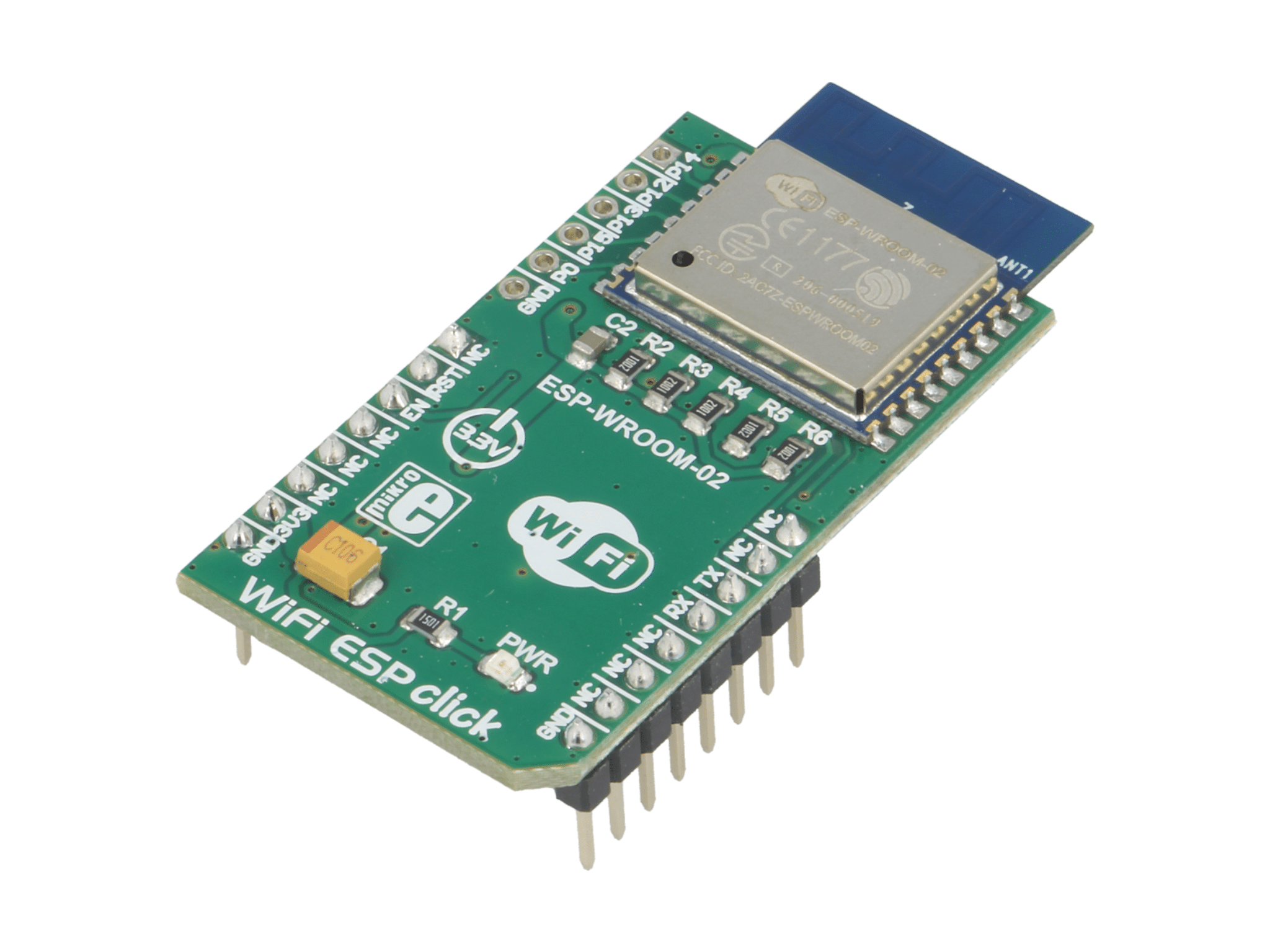
Comparison of MC Nano products
One of the biggest advantages of the MC Nano series is the wide range of microcontrollers installed on this platform. The following table shows the systems currently available directly from the TME catalog, but the offer will surely increase.
The current range example shows the broad spectrum of prototype boards in the Microchip Curiosity Nano family. In the case of simple mobile apps where the key factor will be the Energy Efficiency , the best choice will be boards with ATTINY (the perfect example of such a product is the DM080104 kit): adapted to projects with low power consumption, perfect as controllers, for example in household appliances or in the automotive industry. Power saving modes (eXtreme Low Power) have PIC16 microcontrollers, which have CIP-type peripherals, that is, Core Independent Peripherals . These are ICs that can operate independently of the core, and even wake the microcontroller from sleep, generating an interrupt conditioned by a programmable parameter (for example, exceed the set voltage at the input of the A/C converter).
In the case of more complex applications, which require real-time calculations and responses, as well as cooperation with numerous sensors, it is worth paying attention to PIC18 products, such as EV26Q64A kit. The microcontrollers in this article group are equipped with numerous interfaces, A/C converters, as well as C/A (ie DAC) , built-in operational amplifier, PWM signal generators with 16-bit resolution and also memories and tailored for fast and reliable data acquisition.
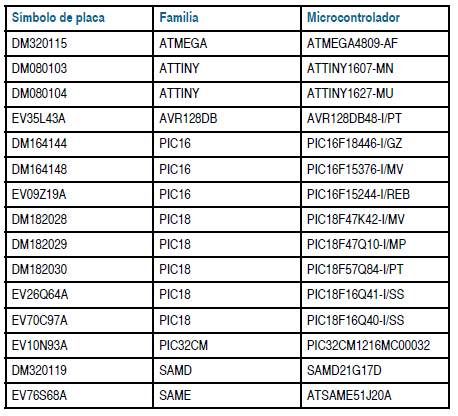
Application and programming examples
For users who are getting started in MPLAB IDE or Microchip Studio environments, the manufacturer has prepared a large number of auxiliary materials. They can be found both on the Microchip website and on the YouTube platform. With your help, create the first project and run the IDE it won't be difficult.
The following material illustrates how to import and modify a sample application that demonstrates the functionality of one of the MC Nano boards:
A convenient way to learn about other features of the Microchip Curiosity Nano platform is to participate in classes within the Microchip University program.
Content produced by Transfer Multisort Elektronik Sp. z oo


